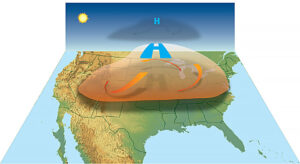Scientifically speaking, the idea of biologically-based classifications of humans, more commonly referred to as “race,” is simply a myth. We are all one species, which is Homo sapiens.
In biology, a species is defined as: “a population of individuals who are able to mate and have viable offspring; that is, offspring who are also successful in reproducing.”
The word race itself is modern and was used in the context of “nation” or “ethnic grouping” during the 16th to 19th centuries and obtained its modern meaning in the field of physical anthropology only from the mid-19th century.
As a matter of fact, ancient cultures such as the Greeks and Romans thought that physical differences could be attributed to environmental conditions, even though they had no knowledge of genetics.
In the early part of the 19th Century, a physician and natural scientist in Philadelphia, Pennsylvania, named Samuel Morton, performed experiments using human skulls. He would fill them with pepper seeds or lead shot, then pour out the contents and calculate the volume of the skulls, thus determining the brain size of each skull.
Morton believed that humans could be classified into five races and that these races were created separately. Each “race” had distinct characteristics, which corresponded to its place in a “divinely determined hierarchy.” His conclusion from the skull measurements was that “whites,” or “Caucasians,” were the most intelligent of the races. East Asians, or “Mongolians” as Morton called them, were one step down the ladder of intelligence. Next came Southeast Asians, followed by Native Americans. “Blacks,” or what he referred to as “Ethiopians,” were at the bottom. In the decades before the Civil War, Morton’s ideas were swiftly used to justify slavery.
When Samuel Morton passed away in 1851, the Charleston Medical Journal in South Carolina showered him with praise for “giving to the negro his true position as an inferior race.” Sadly, his lasting legacy is being called “The father of scientific racism.”
Ernst Haeckel, a zoologist, naturalist, philosopher, physician, and artist, dubbed “the German Darwin,” divided humans into 10 different races. He placed the “Caucasian” at the top of this hierarchy and placed the “Negro” and other “primitive’” races at the bottom.
On August 9, 2019, which marked the 100th anniversary of the death of Ernst Haeckel, the Board of the German Zoological Society denounced Haeckel’s categorization of humans and his “fateful contribution to a form of racism that was seemingly based on science.”
In what has been called the “Jena Declaration,” scholars presented a series of position statements, including the following quotes:
1.“There is no biological basis for races, and there has never been one.”
2. “Genetic differences between groups of people do exist, but they exist along a geographical gradient, meaning there are no clear genetic delineations between groups of people.”
3. “The largest number of genetic differences exists within so-called ‘racial’ groups, and not between said groups.”
The truth is that a randomly-selected Caucasian-American can be more genetically similar to a randomly-selected African than to a fellow randomly-selected American.
Earlier in 2019, the American Association of Physical Anthropologists (AAPA) issued a statement on race and racism comparable to the one made by the Jena scholars. They pointed out that we humans share an astounding 99.9 percent of our DNA. They also stated that a substantially small number of variations in key locations in the human genome are responsible for differences, such as head and skin color, genetic disease propensity, and various other genetic traits.
“No group of people is, or ever has been, biologically homogeneous or ‘pure.’ Furthermore, human populations are not, and never have been, biologically discrete, truly isolated, or fixed.”
As far as skin color is concerned, as our ancestors spread across the Earth, different mutations proved beneficial at different latitudes, and these mutations were passed on to subsequent generations.
The Jena scholars surmised: “Today and in the future, not using the term ‘race’ should be part of scientific decency.”
Michael Yudell, professor of public health at Drexel University, told Megan Gannon in an interview for a 2016 Scientific American article, that replacing “race” with “ancestry” or “population” may be the best way to discuss individuals with geographic ties.
In conclusion, we should accept the fact that “race” is a social construct and has no basis in science.










